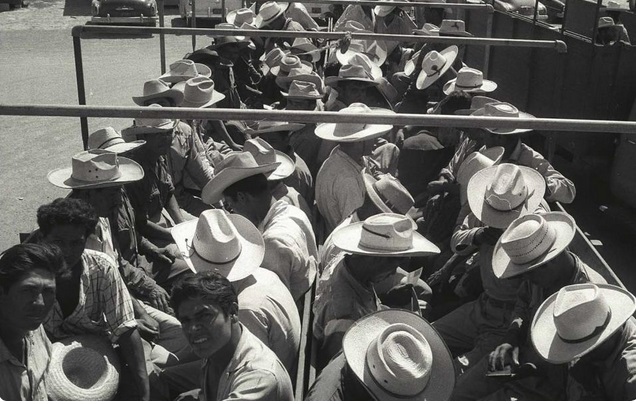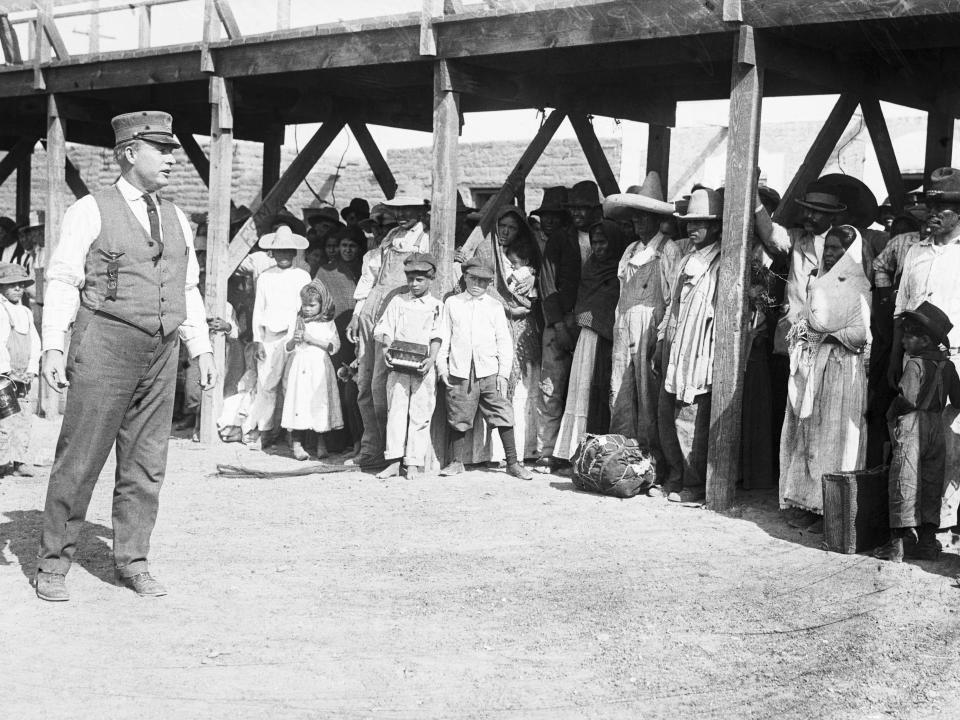
In 1916, the US began forcing Mexicans who crossed the border to bathe in kerosene and vinegar.
Until the 1920s, crossing the southern border was not heavily restricted and was not considered illegal. Domestic workers and farm laborers regularly made their way between Mexico and the United States.
But the Mexican Revolution — which began in 1910 and continued until 1917 — had seen immigration into the US dramatically increase at the border.
This provoked feelings of animosity and xenophobia among some white Americans who lived along the border, heightened by a growing culture of patriotism and paranoia due to World War I.
In El Paso, Texas — often referred to as the Ellis Island of the Southwest for being a gateway for many Mexican immigrants — tensions were particularly high.
The city’s newly elected mayor, Thomas Calloway Lea Jr., stoked racist fears of “dirty lousy destitute Mexicans” bringing typhus and other diseases into the city and, in 1916, demanded that a quarantine be put in place.
Although a local Public Health Service Officer, Dr. B.J. Lloyd, said the risk of spreading disease was low and was opposed to quarantine camps, Lloyd and US officials agreed to begin setting up disinfection stations in El Paso where Mexican border-crossers would be forced to face an inspection after being stripped naked, have their possessions treated by steam, and undergo a chemical bath, which meant being sprayed down by kerosene, soap, water, and, in some cases, toxic pesticides. If a woman was suspected to have lice, her hair would also be doused in vinegar and kerosene. Those disinfection stations eventually began popping up across the length of the US-Mexico border.

A US immigration officer talks to Mexicans in El Paso, Texas, 1916.Bettmann/Getty
Rumors about the disinfection process spread across Mexico. Some migrants feared that people would be burned to death in the kerosene bath, especially after at least 25 bathers died when someone lit a match in a disinfection station. Women also feared being photographed naked in the baths.
After hearing these stories, 17-year-old Carmelita Torres refused to submit to a bath. When officials would not let her proceed and would not refund her trolley fare to return, she began protesting. Other women joined Torres in her protest, eventually drawing a crowd of several thousand who gathered to watch the conflict.
Click here to read the complete original article by DeArbea Walker on Business Insider
Source: Business Insider





